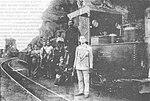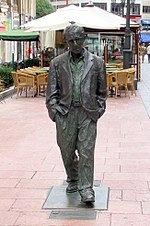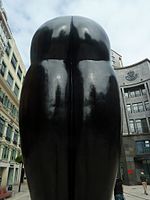San Miguel de Lillo

St. Michael of Lillo (Spanish: San Miguel de Lillo, Asturian: Samiguel de Lliño) is a Roman Catholic church built on the Naranco mount, near the Church of Santa María del Naranco in Asturias. It was completed in 842 and it was consecrated by Ramiro I of Asturias and his wife Paterna in the year 848. It was originally dedicated to St. Mary until this worship passed to the nearby palace in the 12th century, leaving this church dedicated to Saint Michael. It has been a UNESCO World Heritage Site since 1985. It originally had a basilica ground plan, three aisles with a barrel vault, although part of the original structure has disappeared as the building collapsed during the 12th or 13th century. Nowadays, it conserves its western half from that period, together with several elements in the rest of the church such as the fantastic jambs in the vestibule or the extraordinary lattice on the window of the southern wall, sculpted from one single piece of stone.
Excerpt from the Wikipedia article San Miguel de Lillo (License: CC BY-SA 3.0, Authors, Images).San Miguel de Lillo
Carretera del Naranco, Oviedo
Geographical coordinates (GPS) Address External links Nearby Places Show on map
Geographical coordinates (GPS)
| Latitude | Longitude |
|---|---|
| N 43.380277777778 ° | E -5.8683888888889 ° |
Address
San Miguel de Lillo
Carretera del Naranco
33012 Oviedo
Asturias, Spain
Open on Google Maps











